Abstract
Some children with autism have difficulty acquiring tacts, despite their ability to mand, echo words, and imitate actions. The current study focused on 2 nonvocal children who had acquired a few mands using sign language, but had repeatedly failed to acquire signed tacts. Two procedures were compared to determine the most effective approach for training tacts to these participants. One procedure (the standard condition) used the general verbal prompt “What is that?” The other procedure (the intraverbal condition) used a specific intraverbal prompt “Sign [spoken word].” The results showed that both participants acquired nonimitative verbal responses during the intraverbal condition but not during the standard condition. One participant demonstrated complete transfer to pure tacts, and the other participant showed a partial transfer to pure tacts. These results have implications for the design of language intervention programs for children with autism who have difficulty acquiring tacts.
Full text
PDF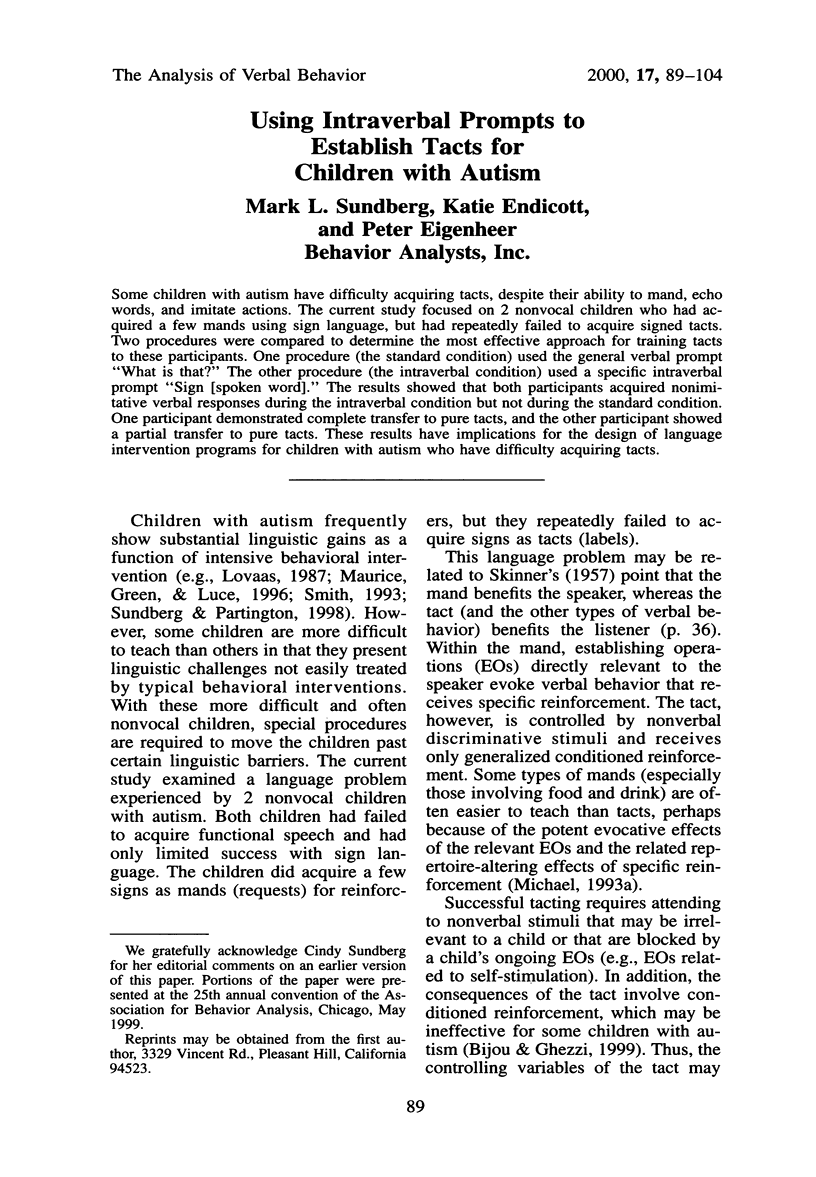
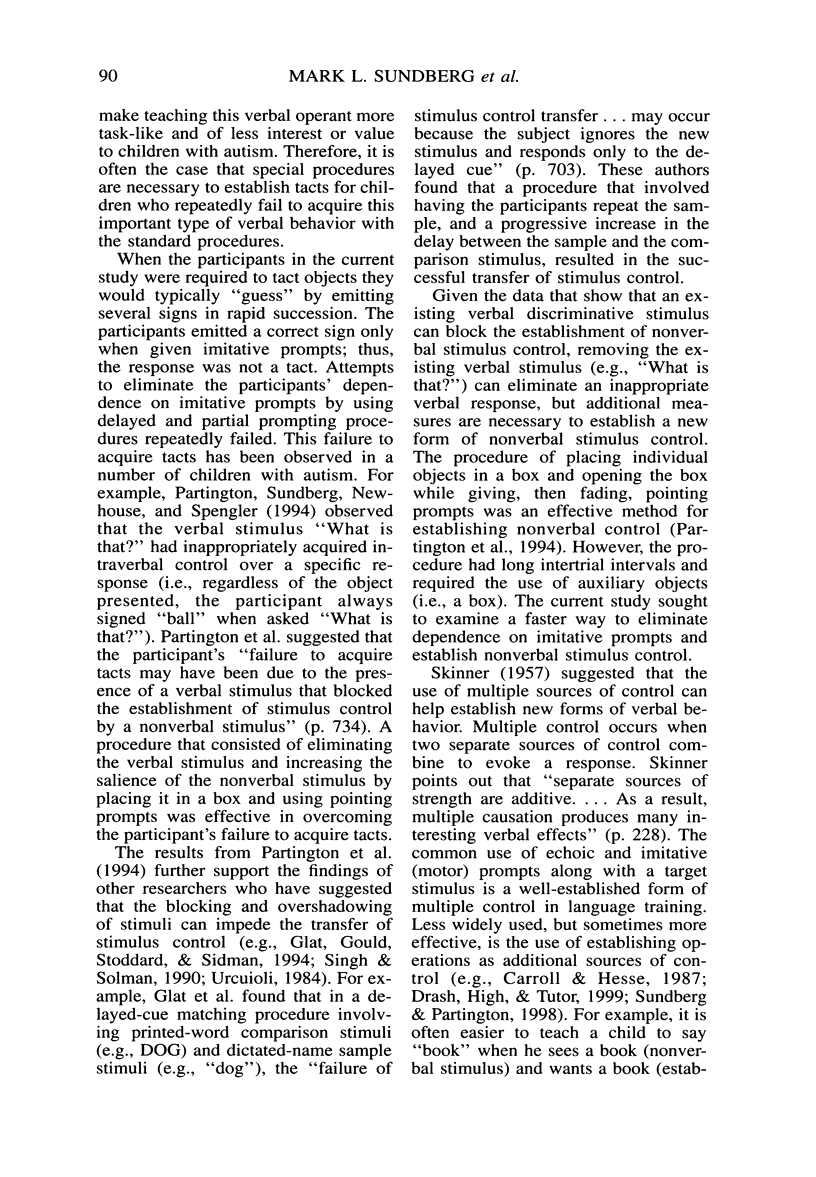
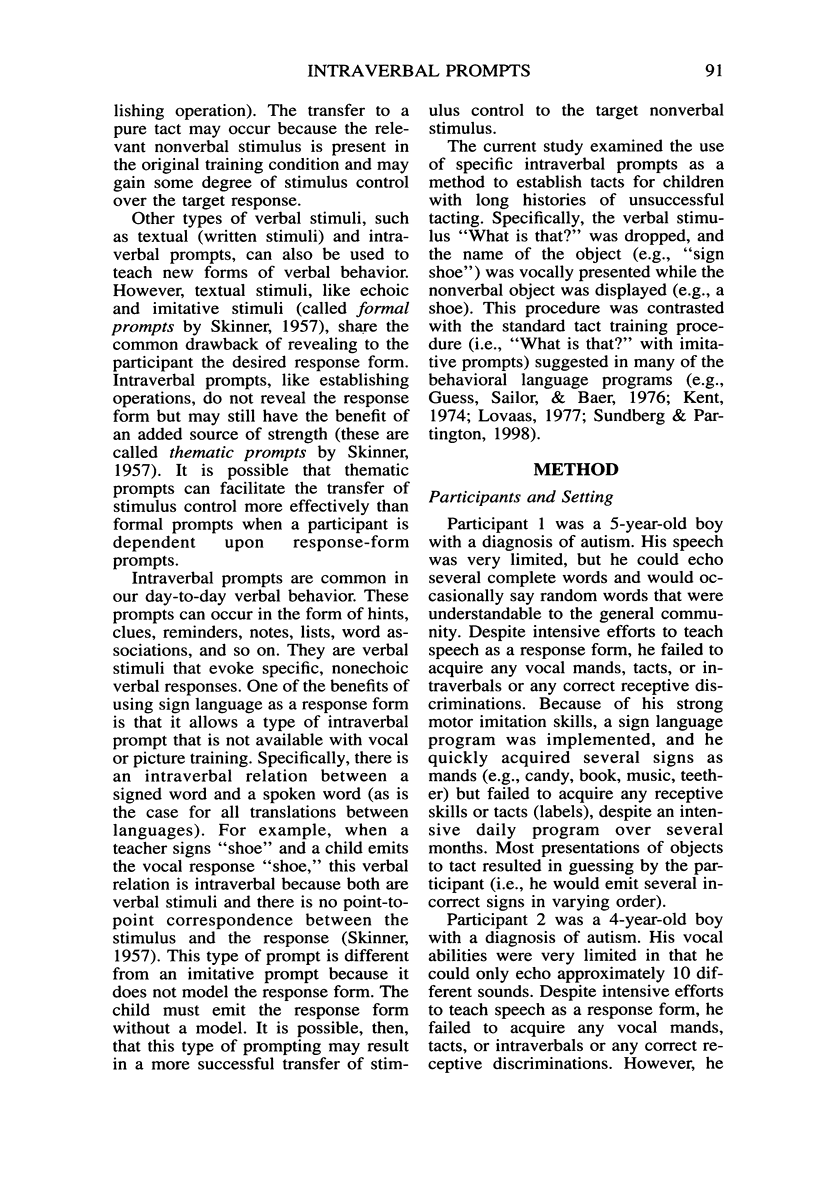
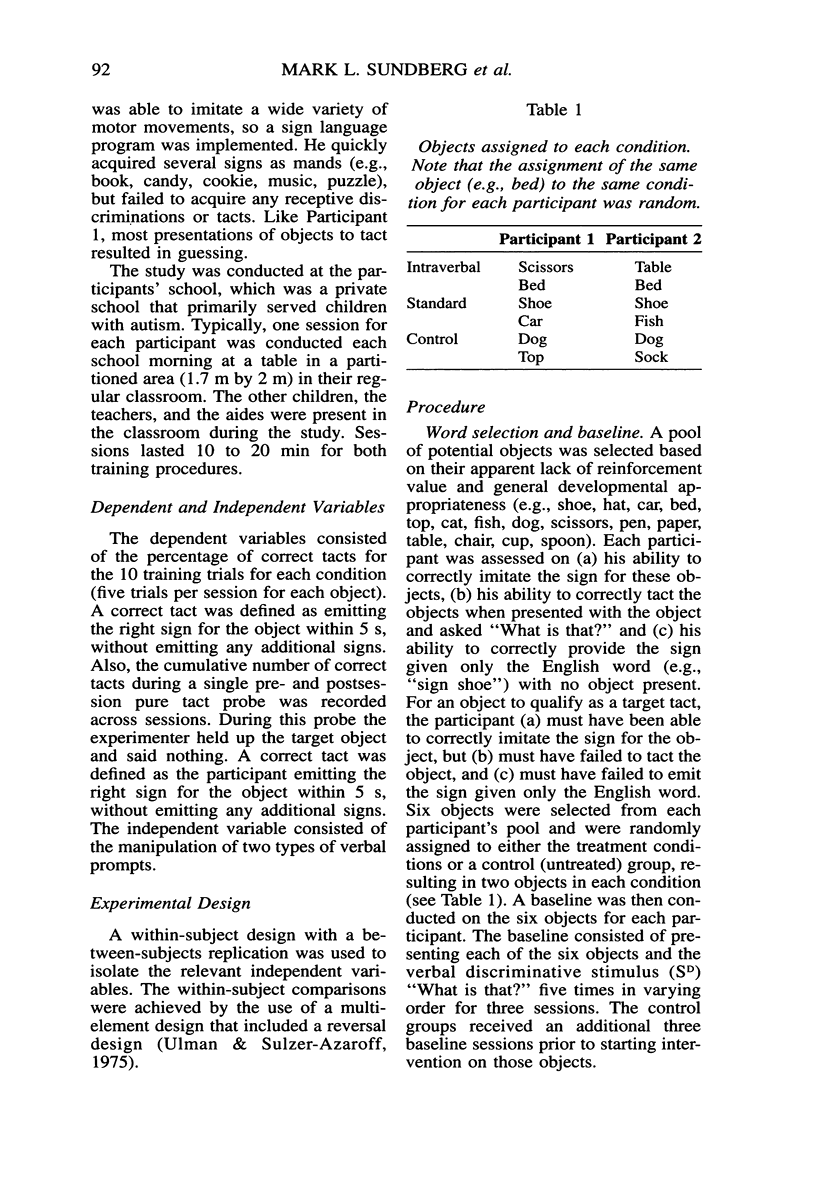
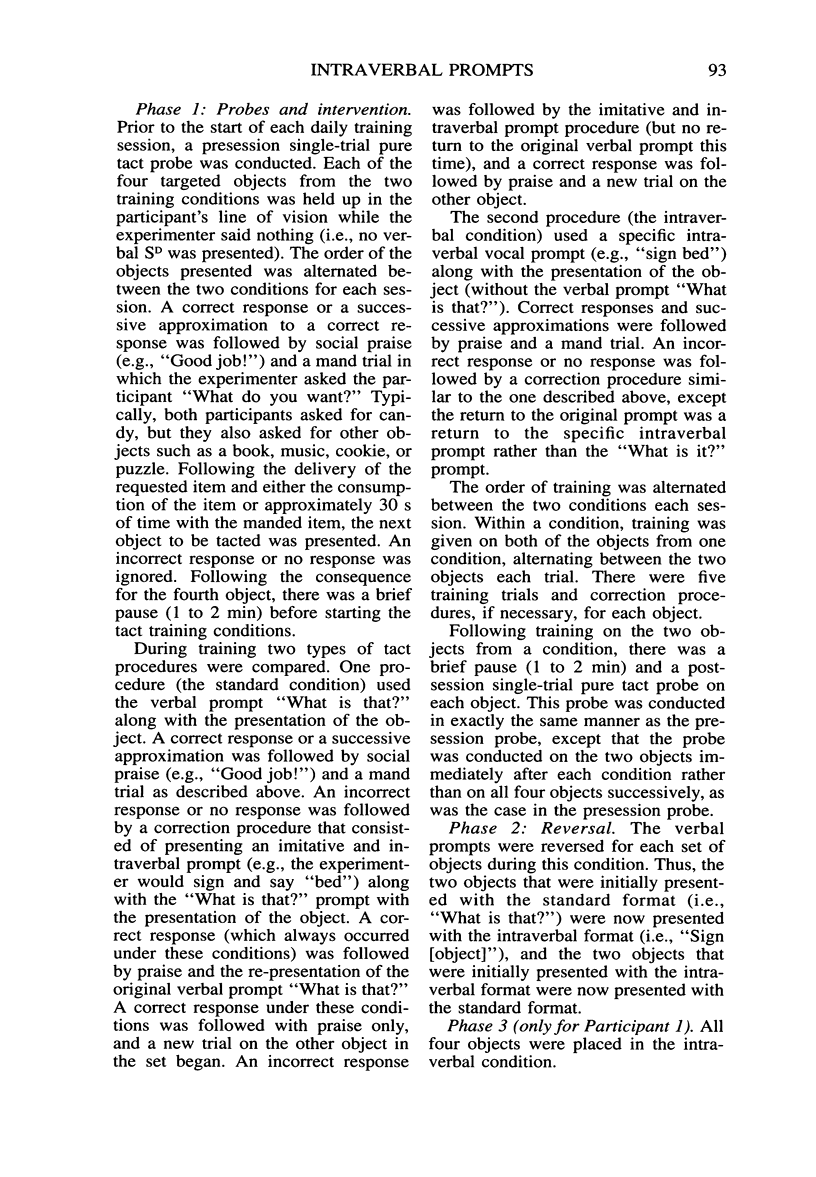
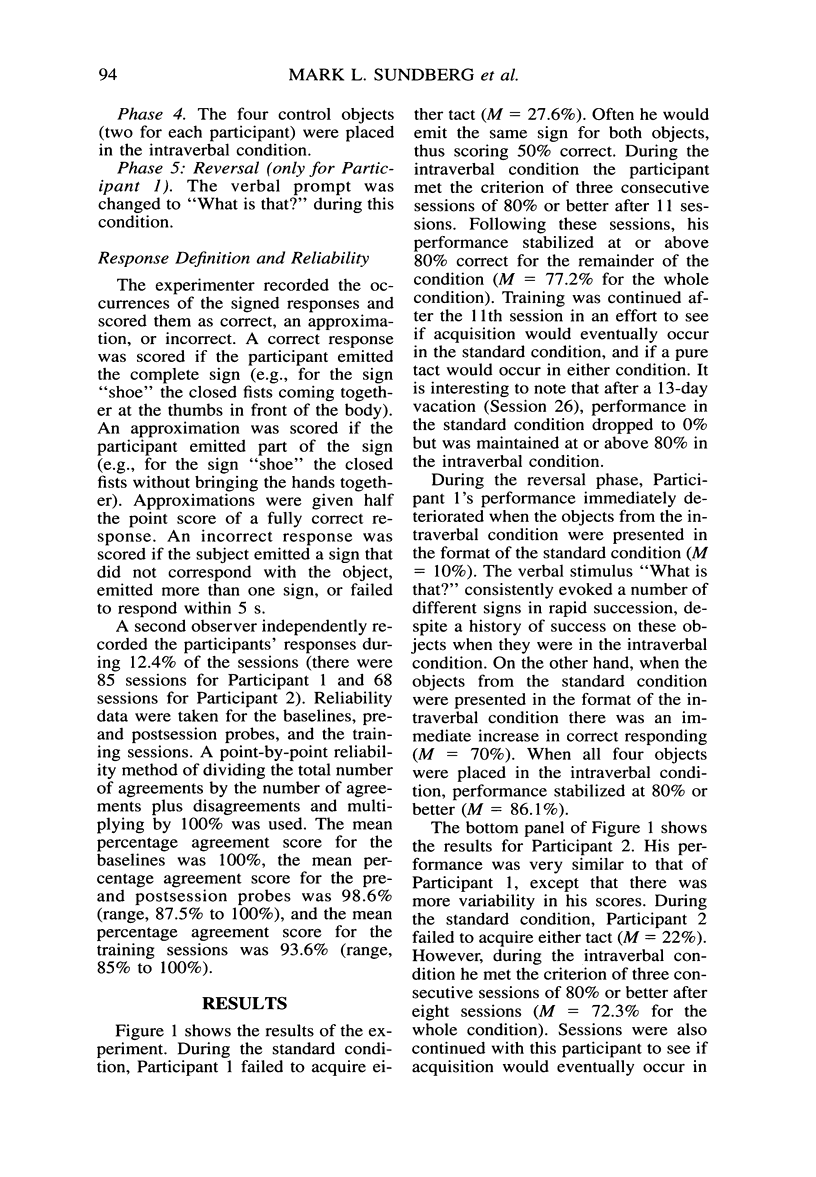
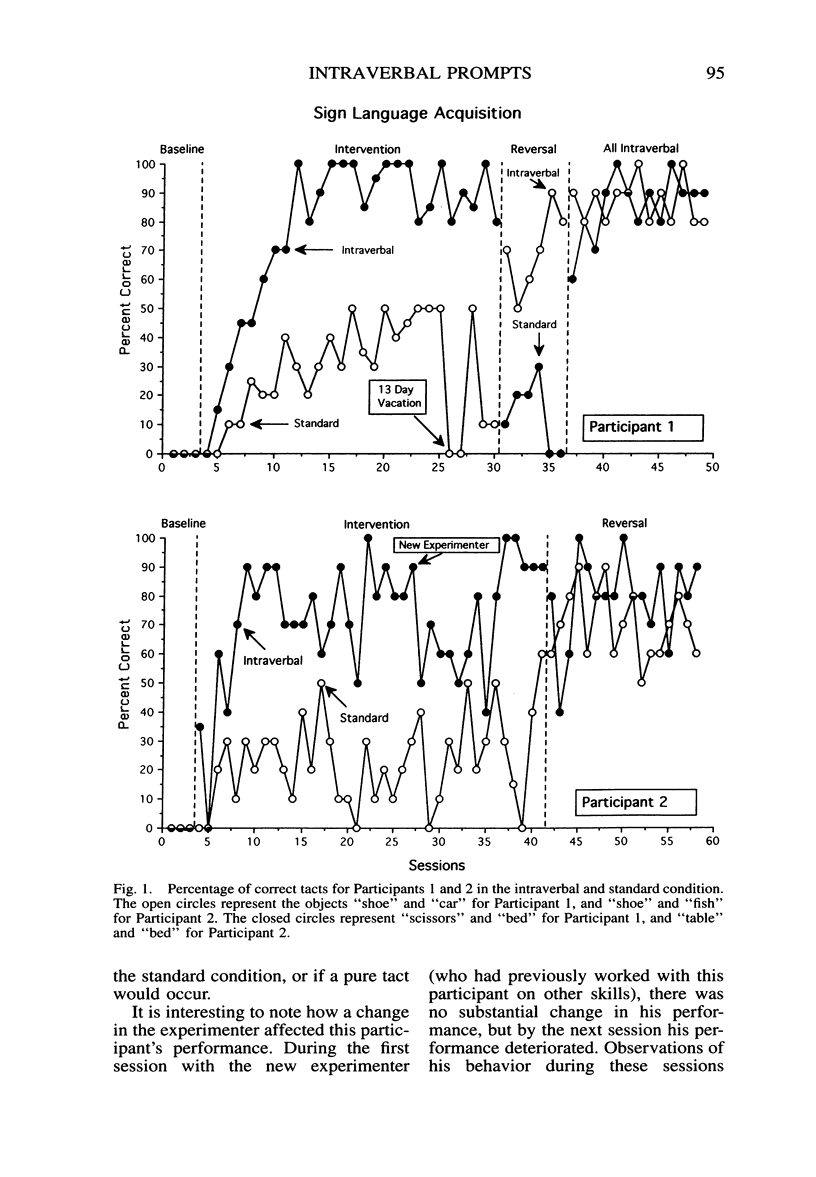
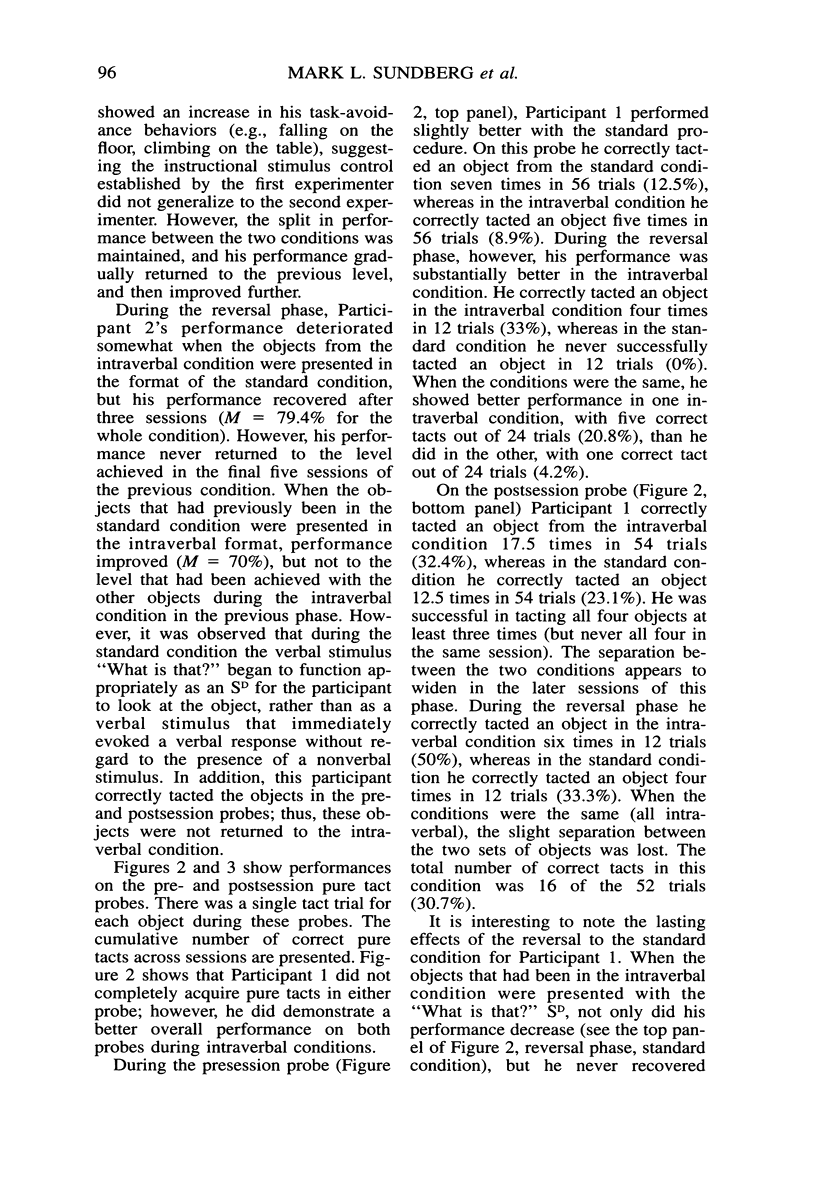
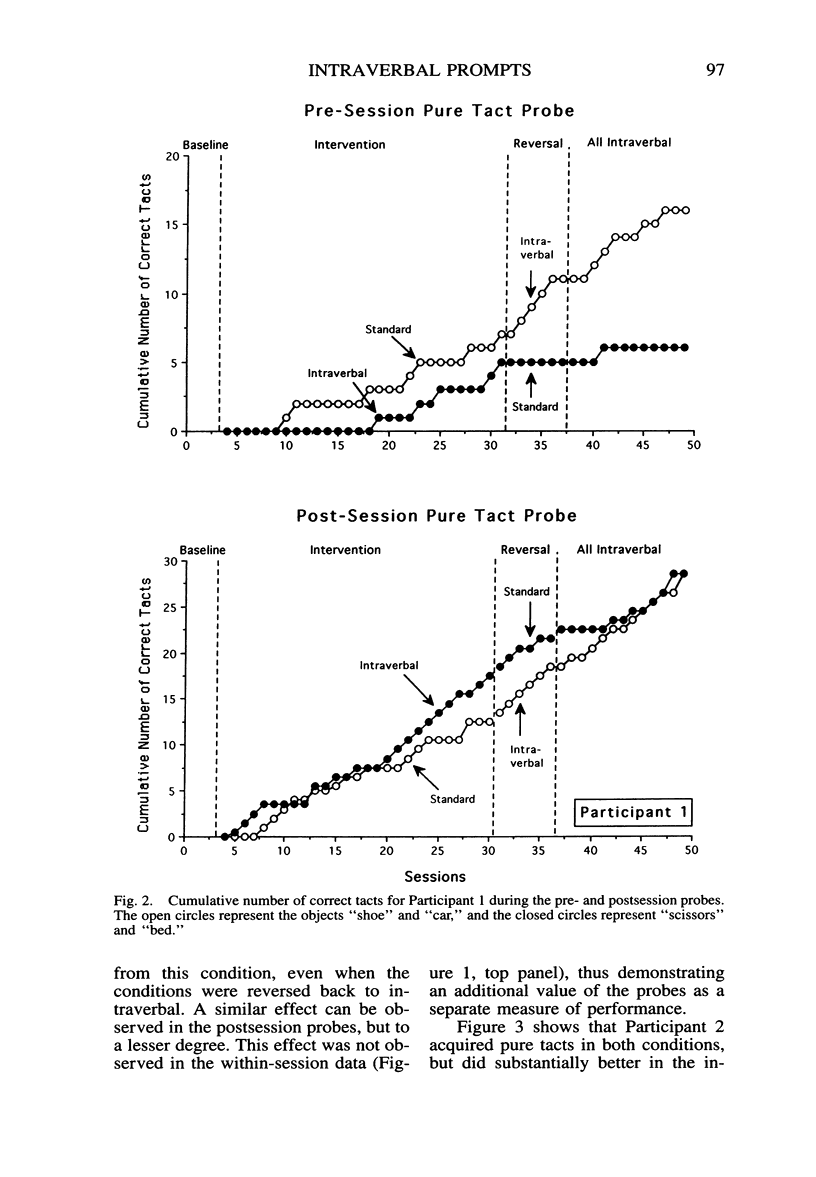
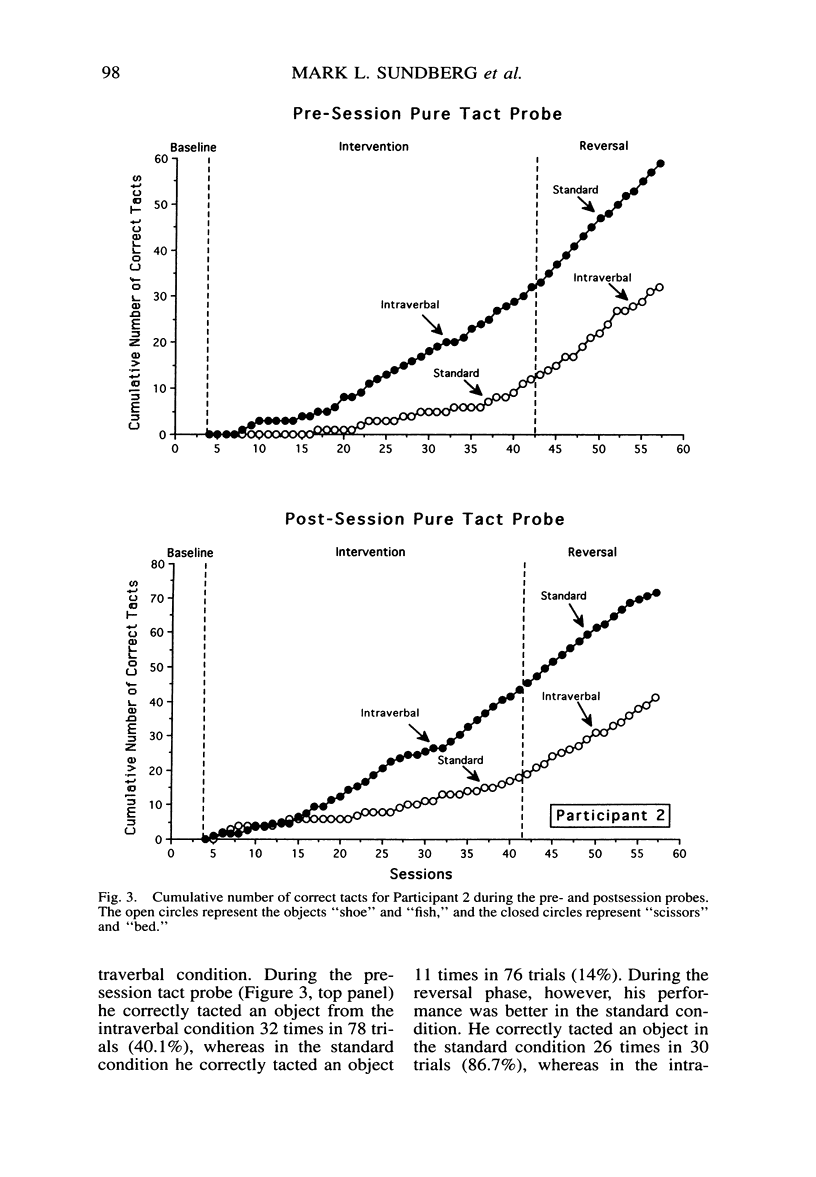
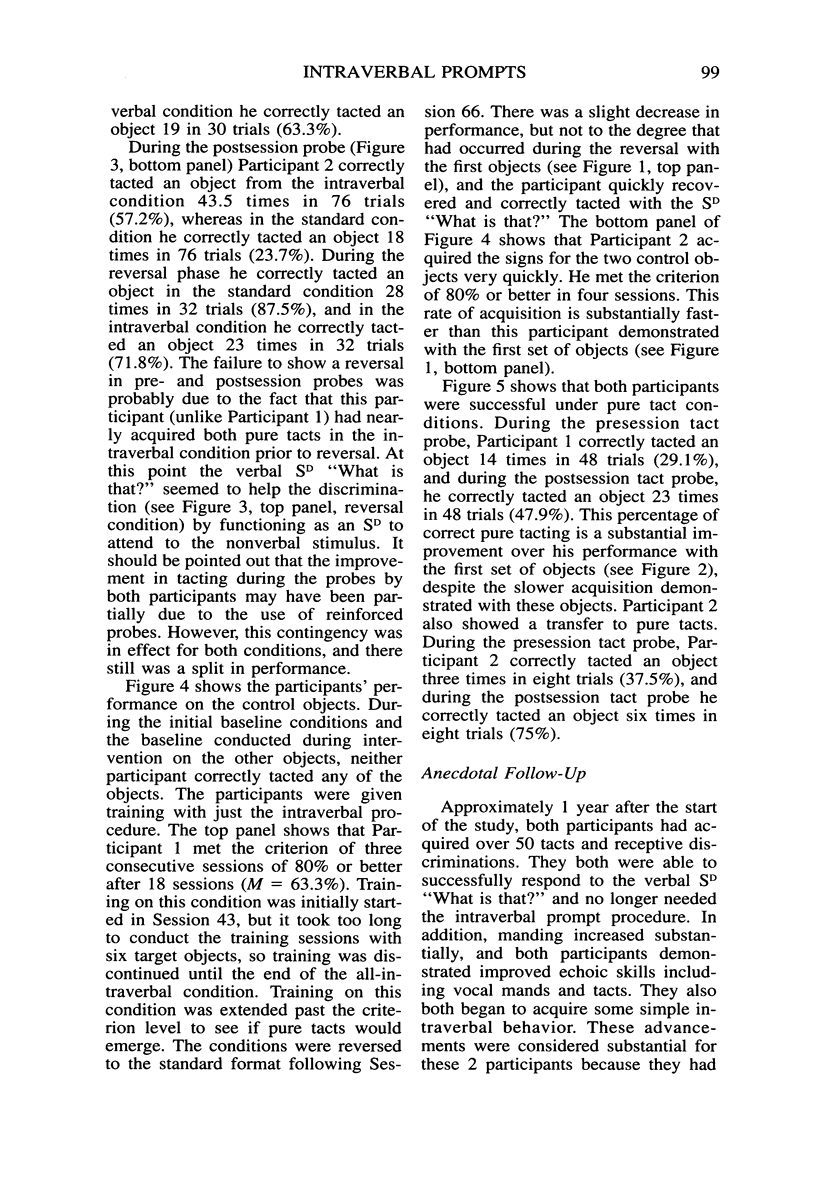
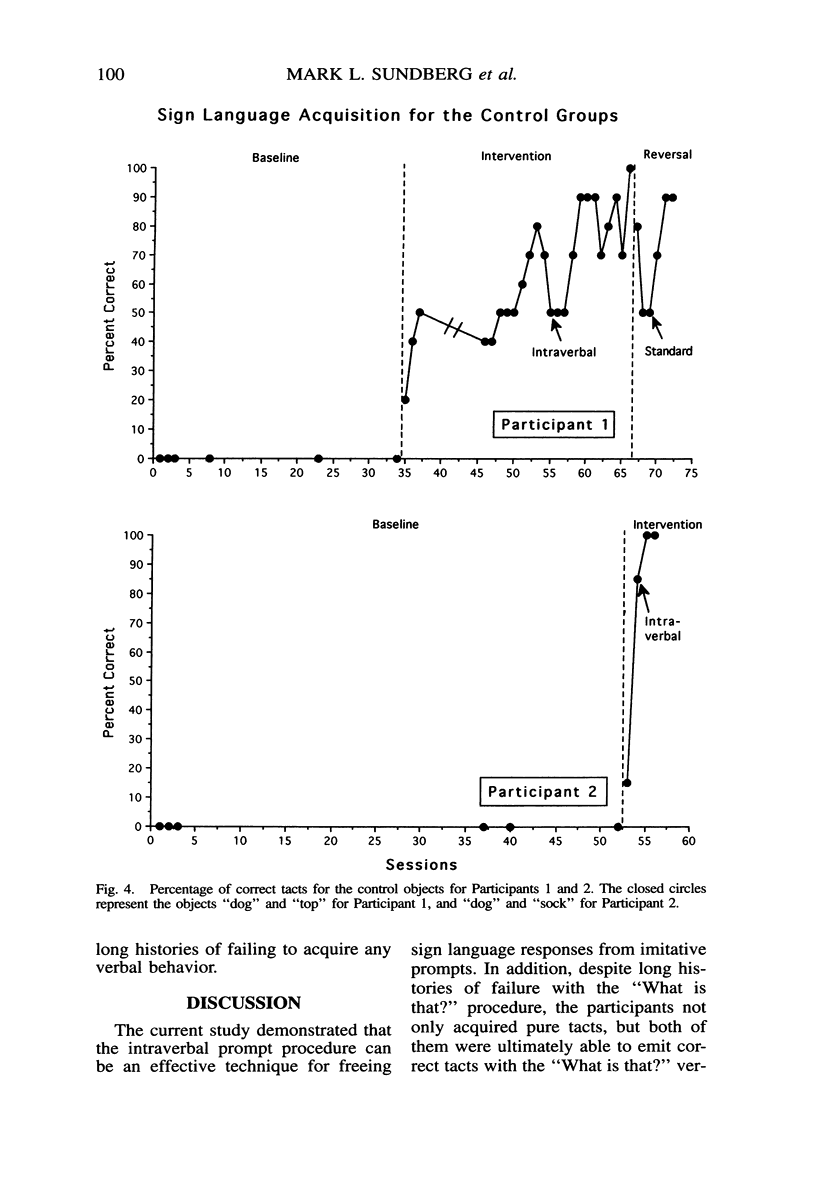
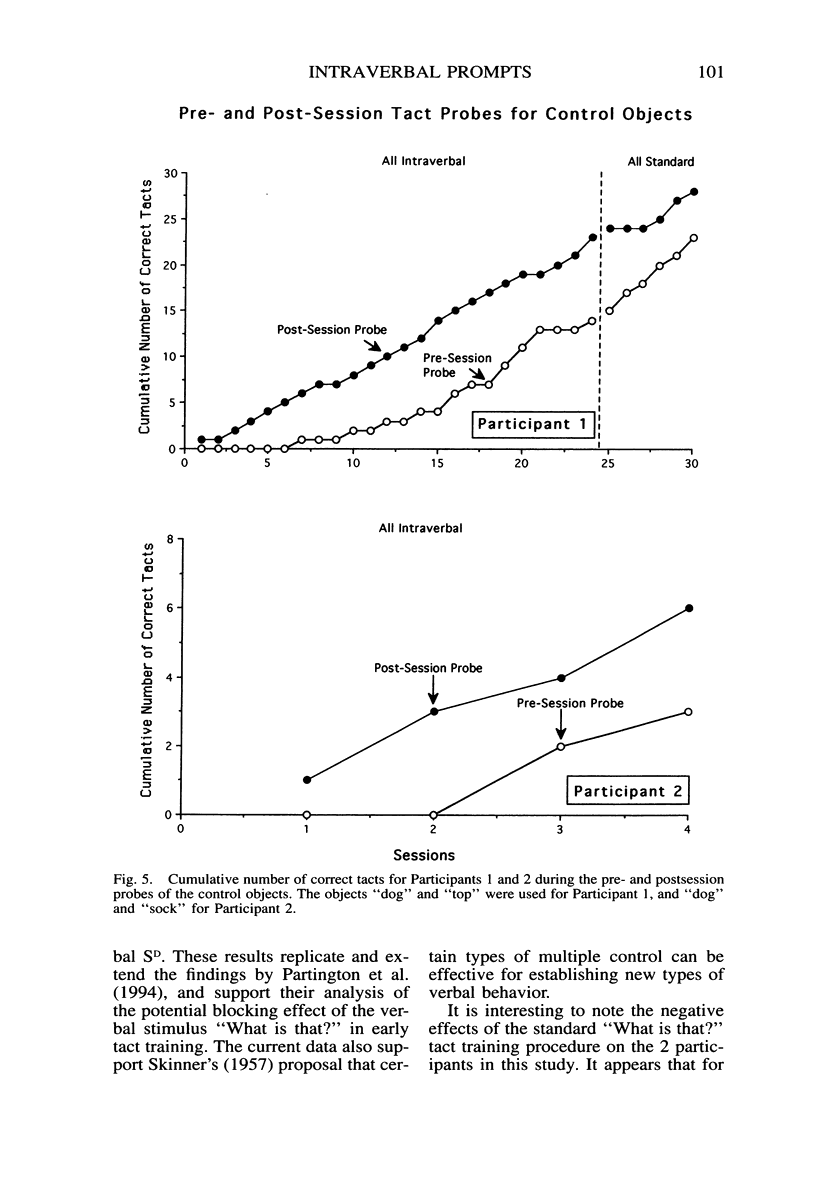

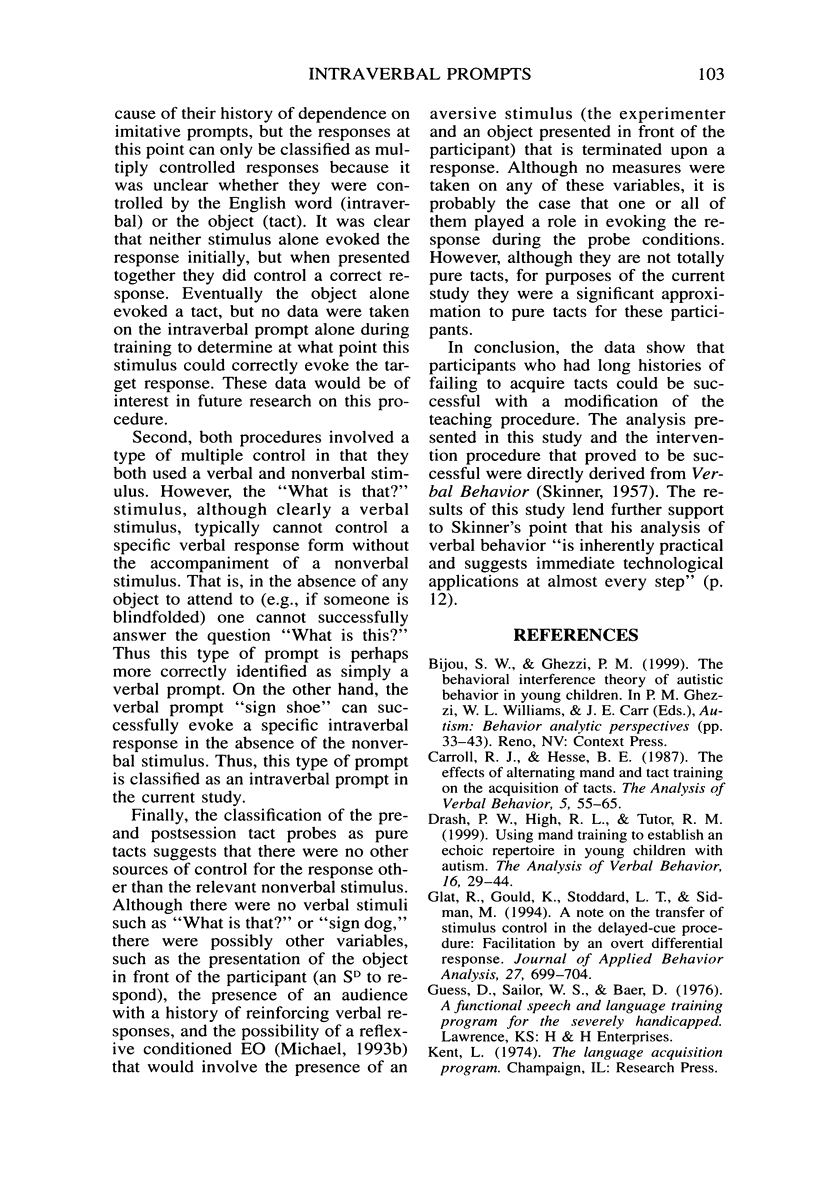

Selected References
These references are in PubMed. This may not be the complete list of references from this article.
- Glat R., Gould K., Stoddard L. T., Sidman M. A note on transfer of stimulus control in the delayed-cue procedure: facilitation by an overt differential response. J Appl Behav Anal. 1994 Winter;27(4):699–704. doi: 10.1901/jaba.1994.27-699. [DOI] [PMC free article] [PubMed] [Google Scholar]
- Michael J. Establishing operations. Behav Anal. 1993 Fall;16(2):191–206. doi: 10.1007/BF03392623. [DOI] [PMC free article] [PubMed] [Google Scholar]
- Partington J. W., Sundberg M. L., Newhouse L., Spengler S. M. Overcoming an autistic child's failure to acquire a tact repertoire. J Appl Behav Anal. 1994 Winter;27(4):733–734. doi: 10.1901/jaba.1994.27-733. [DOI] [PMC free article] [PubMed] [Google Scholar]
- Singh N. N., Solman R. T. A stimulus control analysis of the picture-word problem in children who are mentally retarded: the blocking effect. J Appl Behav Anal. 1990 Winter;23(4):525–532. doi: 10.1901/jaba.1990.23-525. [DOI] [PMC free article] [PubMed] [Google Scholar]
- TERRACE H. S. Discrimination learning with and without "errors". J Exp Anal Behav. 1963 Jan;6:1–27. doi: 10.1901/jeab.1963.6-1. [DOI] [PMC free article] [PubMed] [Google Scholar]
- Touchette P. E. Transfer of stimulus control: measuring the moment of transfer. J Exp Anal Behav. 1971 May;15(3):347–354. doi: 10.1901/jeab.1971.15-347. [DOI] [PMC free article] [PubMed] [Google Scholar]


